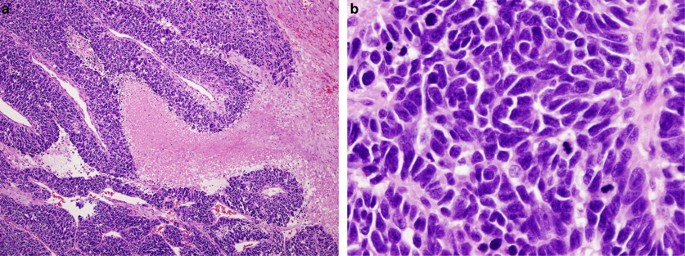A Survival Breakthrough in Small Cell Lung Cancer: Amgen’s IMDELLTRA® Redraws the Map

In a landscape long defined by grim prognoses and limited hope, Amgen’s IMDELLTRA® has pierced the fog with data that may mark a new epoch in the treatment of small cell lung cancer. The biotechnology giant announced that its global Phase 3 DeLLphi-304 clinical trial met its primary endpoint, demonstrating a statistically significant and clinically meaningful improvement in overall survival for patients with relapsed small cell lung cancer (SCLC)—a cohort often written off by traditional oncology playbooks.
This revelation has sent tremors through both clinical and investment communities. It’s the first time a global Phase 3 trial has shown any survival benefit over chemotherapy in this notoriously aggressive and evasive form of cancer.
A First-in-Class Contender in a Therapeutic Wasteland
What Makes SCLC So Relentless—and Why IMDELLTRA Might Change That

Small cell lung cancer comprises roughly 15% of the 2.4 million annual global lung cancer diagnoses, but its clinical gravity far outweighs its share. With a five-year survival rate between just 5–10%, most patients relapse quickly after initial treatment with platinum-based chemotherapy, leaving physicians with little more than palliative intent.
Comparison of 5-year survival rates for Small Cell Lung Cancer (SCLC) versus Non-Small Cell Lung Cancer (NSCLC).
| Stage | SCLC 5-Year Relative Survival Rate | NSCLC 5-Year Relative Survival Rate | Data Source/Notes |
|---|---|---|---|
| Localized | 29% | 65% | SEER data (diagnosed 2012-2018, reported Jan 2024 by ACS) |
| Regional | 15% | 37% | SEER data (diagnosed 2012-2018, reported Jan 2024 by ACS) |
| Distant | 3% | 9% | SEER data (diagnosed 2012-2018, reported Jan 2024 by ACS) |
| Overall | ~7% | ~26% | Overall US SEER data (diagnosed 2011-2017, reported 2022) |
Amgen’s IMDELLTRA is designed to target DLL3, a protein expressed in up to 96% of SCLC tumors and virtually absent in healthy tissue. Its bispecific mechanism brings CD3-positive T cells into proximity with DLL3-expressing cancer cells—creating a cytotoxic bridge that turns the immune system into an executioner.
Bispecific T-cell Engagers (BiTEs) are engineered antibodies designed to simultaneously bind to a T-cell and a cancer cell. This bridging action redirects the T-cell's cytotoxic activity, enabling it to recognize and kill the targeted tumor cell, explaining their mechanism in cancer therapy.
For many oncologists, this concept has hovered in the realm of theoretical promise for years. IMDELLTRA has now translated that theory into a tangible overall survival (OS) advantage—a clinical currency that no prior agent in this space has been able to mint.
The Numbers That Matter: A Shift From Temporary Response to Prolonged Survival
From Response Rates to Survival Curves
Illustrative Kaplan-Meier survival curve showing improved overall survival for a new therapy compared to standard chemotherapy.
| Therapy Comparison | Key Finding | Context |
|---|---|---|
| Pembrolizumab vs. Chemo (NSCLC) | 5-year OS: 31.9% vs. 16.3%; Median OS: 26.3 vs. 13.4 months | KEYNOTE-024 trial, NSCLC with PD-L1 ≥50%; 38% lower death rate |
| Immunotherapy vs. Chemo (Colorectal) | Significant benefit only in MSI-H patients (HR 0.57) | 3-year survival: 50.96% vs. 44.35% for MSI-H; MSS patients showed no advantage (HR 0.94) |
| Immune Checkpoint Inhibitors vs. Chemo | ~10% improved long-term survival | Meta-analysis of 13 trials across multiple cancers; traditional HR 0.75, adjusted short-term HR 0.86 |
| Immunotherapy vs. Chemo (Crossing Curves) | Initial higher risk with immunotherapy, better long-term outcomes | Complex pattern requiring individualized treatment approaches |
| Checkpoint Inhibitors vs. Dacarbazine (Melanoma) | Response: 30-40% vs. 10-20%; 5-year survival: 30-40% vs. <1 year median | Significant improvement in metastatic melanoma outcomes |
| Pembrolizumab vs. Chemo (NSCLC with high PD-L1) | Response: 45% vs. 20-30%; Median survival: 30 vs. 10-12 months | Substantial benefit in advanced NSCLC with high PD-L1 |
| Immunotherapy+Chemo vs. Chemo alone (TNBC) | Response: 53% vs. 30-40%; Median survival: 25 vs. <18 months | Combination benefit in PD-L1 positive triple-negative breast cancer |
| The trial’s headline is simple but seismic: IMDELLTRA prolonged life. While Amgen has yet to release the full breakdown of hazard ratios and median OS figures, the company emphasized that the benefit was not just statistically significant but also “clinically meaningful.” |
“This is not a marginal win over chemotherapy,” said one analyst familiar with the dataset. “We’re talking about an improvement that could redefine the standard of care for relapsed SCLC—if this holds on peer-reviewed scrutiny.”
Past therapies like topotecan, lurbinectedin, or amrubicin have largely eked out modest gains—often adding only a few weeks to survival with considerable toxicity. IMDELLTRA’s advancement, by contrast, carries both the numerical weight of a Phase 3 win and the symbolic weight of a new modality succeeding where others have failed.
The Price of Precision: Safety, Access, and Systemic Strain
Balancing Toxicity With Efficacy
IMDELLTRA is not without caveats. The drug carries boxed warnings for cytokine release syndrome (CRS) and neurologic toxicities, including immune effector cell-associated neurotoxicity syndrome (ICANS).** These are serious conditions that require clinicians to use specialized administration protocols, including step-up dosing and intensive monitoring, particularly during the initial infusion cycles.
Cytokine Release Syndrome (CRS) is a potentially serious side effect often associated with certain cancer treatments like immunotherapy. It involves an overactive immune response where large amounts of cytokines are released, leading to various symptoms.

Yet, for many oncologists, the risk is one they are increasingly prepared to manage—especially given the context. "We’re not giving this to treatment-naïve breast cancer patients," noted one clinical investigator. "This is end-stage SCLC. The bar is not comfort—it's survival."
That said, the need for specialized infusion centers, close patient monitoring, and trained staff will limit IMDELLTRA's early adoption to well-resourced tertiary care centers, particularly in high-income countries.
A Billion-Dollar Battlefield: Market Dynamics and Competitive Pressure
The Opportunity—and the Landmines
Projected global market size for Small Cell Lung Cancer (SCLC) therapeutics over the next 5-10 years.
| Scope/Source | Base Year Market Size (USD) | Forecast Period | Projected Market Size (USD) | CAGR | Date of Report/Forecast |
|---|---|---|---|---|---|
| Global (IMARC Group) | 8.9 Billion (2024) | 2025-2035 | 23.0 Billion | 9.17% | Feb 17, 2025 |
| Global (Precedence Research) | 6.46 Billion (2024) | 2024-2034 | 20.6 Billion | 12.30% | Oct 28, 2024 |
| Global (iHealthcareAnalyst) | Not specified | 2025-2031 | 6.5 Billion | 18.5% | Dec 17, 2024 |
| Global (Data Bridge MR) | 10 Billion (2021) | 2022-2029 | 21.44 Billion | 10.0% | Pre-2024 |
| Global (Cognitive MR) | 6.52 Billion (2025 Est.) | 2025-2033 | 17.59 Billion | 13.20% | Feb 2025 |
| Global (TMR) | 4.6 Billion (2022) | 2023-2031 | 12.9 Billion | 11.9% | Apr 2023 |
| Global (Research Report) | 7.32 Billion (2022) | 2023-2030 | 21.21 Billion | 14.22% | Pre-2024 |
The global market for SCLC therapeutics is valued in the multi-billion-dollar range, and despite its relatively small incidence rate, its high mortality and rapid relapse rates make it a high-turnover, high-need market segment.
By being the first drug to prove survival benefit in this post-platinum space, IMDELLTRA could corner a meaningful share of this niche. Analysts anticipate peak annual revenues in the $2–4 billion range, assuming continued positive data and eventual approval across major markets.
But the competition is circling. Other agents—including Amgen’s own earlier-stage DLL3 T cell engager AMG757—are in development. Immuno-oncology giants are probing the same terrain with different mechanisms, including TIGIT blockers, ADCs, and checkpoint inhibitor combos. A misstep from IMDELLTRA, especially on safety or logistics, could create a vacuum that others would rush to fill.
Infrastructure Is the Next Frontier
The Drug Works. Now Who Will Deliver It?
IMDELLTRA’s sophisticated design demands equally sophisticated systems for delivery. The drug must be administered with tiered infusion steps under close observation—something that rural oncology clinics or lower-resource settings may struggle to offer.

Health systems will need to rethink patient pathways, and payers will face pressure to support the infusion infrastructure. Some believe this could prompt a wave of public-private partnerships or Amgen-backed clinician education programs to help bring administration closer to patients.
Moreover, the therapy’s high cost—likely exceeding $250,000 annually per patient—will force governments and insurers to justify it through quality-adjusted life year (QALY) metrics and long-term hospitalization offsets.
Quality-Adjusted Life Years (QALYs) are a metric used in healthcare economics to measure health outcomes, combining both the quantity (length) and quality of life into a single figure. They are calculated by multiplying the years of life gained by a quality-of-life score (usually between 0 for death and 1 for perfect health).
What Comes Next: Data, Decisions, and Disruption
More Questions Than Answers—For Now
Amgen plans to unveil the full Phase 3 results at a major medical congress in the coming months. Oncologists will be looking not just at overall survival, but also progression-free survival, response duration, and patient-reported outcomes.

Regulators will demand not just efficacy, but reproducibility. And payers will want to see economic models that prove value—not just efficacy at any price.
"Everyone is holding their breath," said a healthcare economist. "It’s a breakthrough—but we’ve seen breakthroughs that never made it to standard practice. The burden is now on Amgen to navigate logistics, economics, and biology all at once."
Strategic Implications for the Biotech Sector
A Rising Tide—or a One-Off Success?
IMDELLTRA’s success also acts as a litmus test for next-generation immunotherapies. If Amgen can secure regulatory approvals and widespread adoption, it could ignite investor interest in bispecifics and other dual-target agents—not just in lung cancer, but across oncology.
Smaller biotechs with complementary technologies, like targeted infusion platforms or next-gen T cell engagers, may find themselves acquisition targets or key licensing partners. Meanwhile, big pharma players could scramble to secure their own DLL3 pipelines, triggering a domino effect in oncology deal-making.
Conclusion: A Turning Point With Caveats
IMDELLTRA is not merely a promising therapy; it is a potential watershed in the bleak narrative of SCLC. If the full data corroborate this initial triumph, Amgen may not only establish a new standard of care but also blaze a trail for how immunotherapy can be harnessed in some of the most resistant cancers.
Yet the journey from press release to real-world impact is long. Safety, infrastructure, cost, and competition all pose formidable obstacles. But in a therapeutic space where “hope” has long been the rarest commodity, Amgen has delivered a reason to believe—and the market, clinicians, and patients are watching closely.
